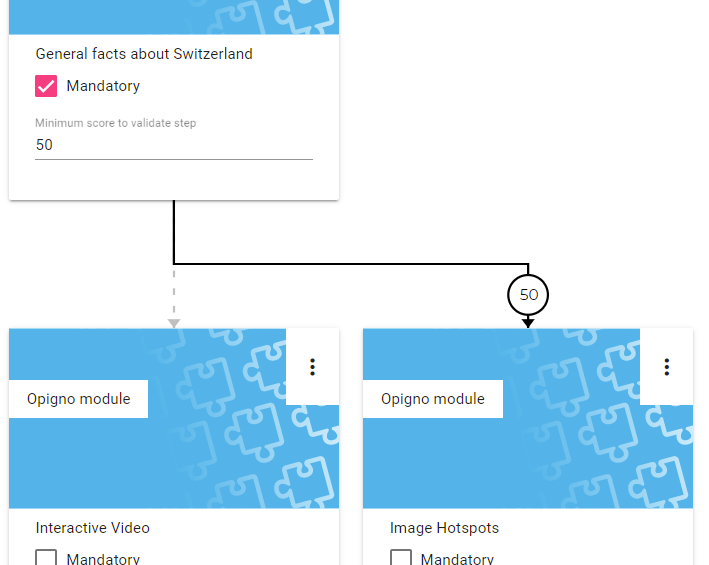Opigno LMS User manual
Create conditional paths
Conditional paths make possible to offer several different next steps, according to the score at the current step.
The process to create conditional paths is to first add several child-steps to a given step, and then click on the transition arrows to add the condition for each of them.
When clicking on a transition arrow you will see a popup as below:
This makes possible to define one or several conditions either on the minimum score at last step or on the answer to some activities inside last module ; these conditions will be evaluated by Opigno to define the next step of the user's learning path.
To add a new condition, you have to select "score" or "Answer at last step" in the list, and click on "Add" button.
In case of selecting score, you just have to enter the minimum score (in %) to be reached by the user, and click on "Validate" button:
In case of selecting "Answer at last step", some conditions can be defined on all activities with type multiple choice or true/false questions. (Note: this only works if the activities are inside a module that is directly attached to the learning path, it doesn't work at the moment if the module is inside a course ; this feature with modules in courses will be implemented in a next release).
You will just have to select among these questions the one(s) that you want to consider for the condition, and the answers to be considered.
You can this way cumulate conditions on score, and/or the answers to several questions:
The conditions can be be afterwards modified and/or deleted.
When several next steps are available, Opigno will select the first one where all the conditions are met.
In case you want to add additional transitions between some steps, just refer to the next section.
Note
Learners are presented a flat display of learning paths, considering initially the ideal scenario that they got the maximum score at every step. Then, in case of guided navigation, according to their own progress (score and answers) the steps displayed to them in this flat view will be adapted.
In case of free navigation the conditions are not considered, the user can see all the steps and freely navigate within all of them.
Copyright 2008-2024 Connect-i. All Rights Reserved - https://www.opigno.org







